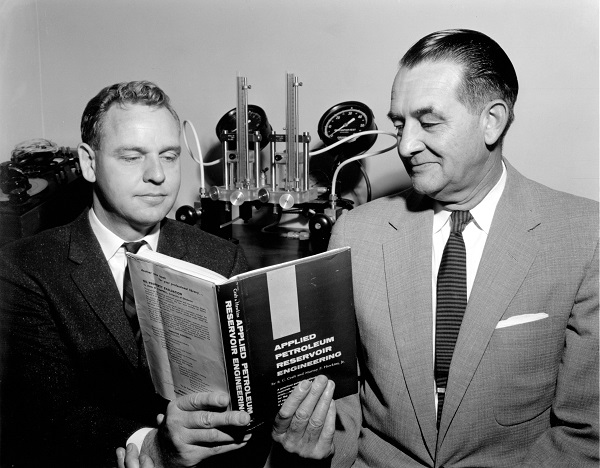The Legacy of Craft & Hawkins

The Craft & Hawkins Department of Petroleum Engineering at LSU is built on the vision, dedication, and enduring influence of two extraordinary pioneers: Benjamin C. Craft and Murray F. Hawkins. Their work shaped not only the direction of petroleum engineering at LSU, but also set a national and international standard for petroleum engineering education.
Petroleum engineering at LSU began humbly in 1922 as a curricular option within geology. Temporary instructors taught courses in petroleum geology, production methods, utilization, and cost accounting. The program took a major step forward in 1929, when Benjamin C. Craft, a 25-year-old graduate student from Stanford University, was hired as the first full-time petroleum engineering faculty member.
At the time, petroleum engineering was still in its infancy — few formal courses existed anywhere in the world, and no textbooks had yet been published. Craft was responsible for developing not just the curriculum, but also the content, structure, and materials for an entirely new field of engineering education. In just a few short years, he expanded the LSU petroleum engineering course offerings from four in 1927 to eleven by 1930. In 1939, the program became a full department within the School of Geology, with Craft appointed as its first department head. In 1956, the department moved into the College of Engineering, where it continues to thrive.
Murray F. Hawkins joined the department in 1946, bringing a research background from Carter Oil Company and Ethyl Corporation. Though not formally trained as an engineer, Hawkins quickly became a technical and academic leader. He taught across the curriculum and made reservoir engineering his specialty. In the early 1950s, he redesigned the department’s reservoir engineering courses to reflect the most current thinking and methods in the field — a structure that still informs our teaching today.
In 1959, Craft and Hawkins co-authored the landmark textbook Applied Petroleum Reservoir Engineering. Known widely as Craft & Hawkins, the book became a foundational text used in petroleum engineering programs across the world. Remarkably, it remains a bestseller and a trusted reference to this day.
Craft led the department until his death in 1964, leaving behind a legacy of academic rigor, curricular innovation, and personal mentorship that defined the department’s culture. Hawkins succeeded him as department head, serving with distinction until his retirement in 1977. Both men were known not only for their professional accomplishments, but for their commitment to their students — as teachers, mentors, and trusted advisors.
Craft and Hawkins didn’t just build a department — they created a model for petroleum engineering education that blended technical excellence with personal character. They trained generations of engineers who carried their values and technical insight into leadership roles throughout the oil and gas industry. Their legacy is embedded in our curriculum, our standards, and the very name we bear.
In 1998, in recognition of their profound and lasting contributions, the Louisiana Board of Regents formally approved the renaming of the department as the Craft & Hawkins Department of Petroleum Engineering. This distinction honors not just two names, but two legacies of excellence, mentorship, and leadership.
Today, the Craft & Hawkins Department stands on the foundation they built — a foundation of innovation, excellence, and service to students and industry alike.